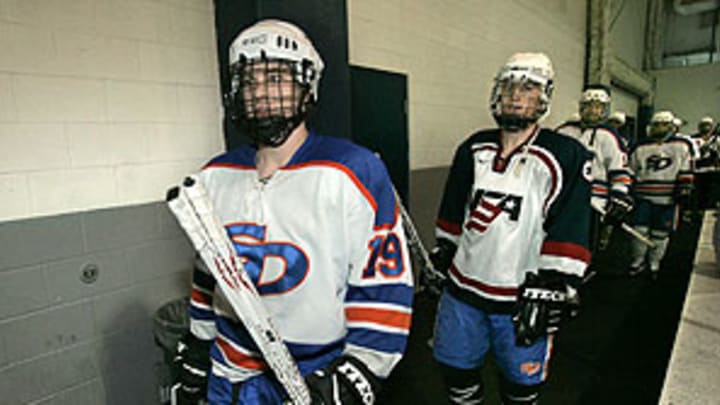San Diego Gulls painted a near-perfect masterpiece in '92-'93


SI.com asked several current and retired SI writers to offer reflections on the best team they ever covered as sports journalists. Here's Jim Trotter on the 1992-93 San Diego Gulls:
Imagine a hockey team starting the season by winning its first eight games, earning 47 of a possible 50 points and going 26 games before losing in regulation.
Imagine a hockey team reeling off separate winning streaks of eight, nine, 11 and 12 games, clinching its division with 22 games to play and earning home-ice for the playoffs with a month to go in the regular season.
Imagine a hockey team never losing more than two consecutive games, setting a professional hockey record for victories (62) and tying the all-time mark for points in a season (132).
Well, I don't have to imagine these things. I witnessed them firsthand during the 1992-93 International Hockey League season, when the San Diego Gulls were as close to perfection as a Rembrandt.
Assembled as a band of NHL has-beens, wanna-bes and never-weres, the players were molded into the most imposing team in minor league history by a human kiln named Rick Dudley. The bright, muscular coach was as intense as he was unrelenting. His commitment to conditioning, teamwork and execution made the Gulls a revelation to hardcore fans and a curiosity worth checking out to casual follwers.
They were so good, so dominant, that my paper, the San Diego Union-Tribune, had little choice but to move them from the back pages, where they shared space with high schools, fish counts and agate columns, to a chair at the grown-ups' table on the front of the section, where they sat alongside the Padres and Chargers.
What made the Gulls equally compelling was the response to their success. Loved in San Diego, they were despised everywhere. Repeated wins will do that. But it was the Gulls' willingness to challenge the league's mission statement that made them iconoclasts.
The IHL prided itself on being a developmental league where NHL clubs could send their prospects for playing time and seasoning before recalling them to the majors. In theory, the youngsters would compete against similar-aged and -skilled players. However the Gulls had other ideas.
SI VAULT:Putting On A Show (10.17.94), by Michael Farber
As one of four "independents," they were not faced with pressures from a parent club to play prospects. And desperate to make a splash in a market that had barely yawned at their existence the previous two years, Dudley and general manager Don Waddell laid out a controversial plan to build their team with veteran, experienced players.
Their early roster included five regulars who had spent at least 10 seasons at that level. It was an incredible advantage because, unlike many of their counterparts, the Gulls knew how to prepare for games and eliminate distractions. Their maturity, conditioning and skill level resulted in 24 of their first 31 victories being by at least three goals.
Frustrated IHL owners lashed out by voting 10-2 to require each team -- including independents -- to carry in future seasons at least six players with no more than three years of pro experience. Said one owner at the time: "Some of the National Hockey League clubs did express concern that their teams would not be competitive against teams that were made up of experienced and former NHL players. They were concerned that maybe that wasn't a healthy situation as it relates to player development."
Ultimately, the Gulls' critics got the last laugh. San Diego, which finished 62-12-8 in the regular season, failed to not only win the IHL championship, but was swept in the finals by the Fort Wayne Komets. The Gulls went from from being unstoppable to unresponsive. They were outscored 21-5 and converted on just one of 25 power plays.
San Diego had no answer for Fort Wayne's 5-foot-8 goalie Pokey Reddick, who was voted MVP of the finals. Reddick ended the season with 15 straight wins and was 24-0-1 in his last 25 decisions. In the postseason he held opponents to two or fewer goals in 11 of 12 games.
The Gulls played two of the championship games without defenseman Mark Ferner, three without winger Robbie Nichols and four without center Len Hachborn, injured regulars who combined for 134 points during the regular season. But to say their presence would have changed the outcome is a reach. Fort Wayne was clearly the better team at that time.
In the years since I have covered the brilliance of Jordan and the Bulls, the greatness of Tom Brady and the Patriots. But the truth is, I'd be hard-pressed to say that either team was as lethal in its precision and efficiency as the Gulls during the 1992-93 regular season.
"It has been one hell of a year," defenseman Lindy Ruff, now coach of the NHL's Sabres, said at the time. "Sometimes the best team goes down. ... But all the guys in this room have to be damn proud of what they did during the year."
No hockey team ever did it better for 82 games.
